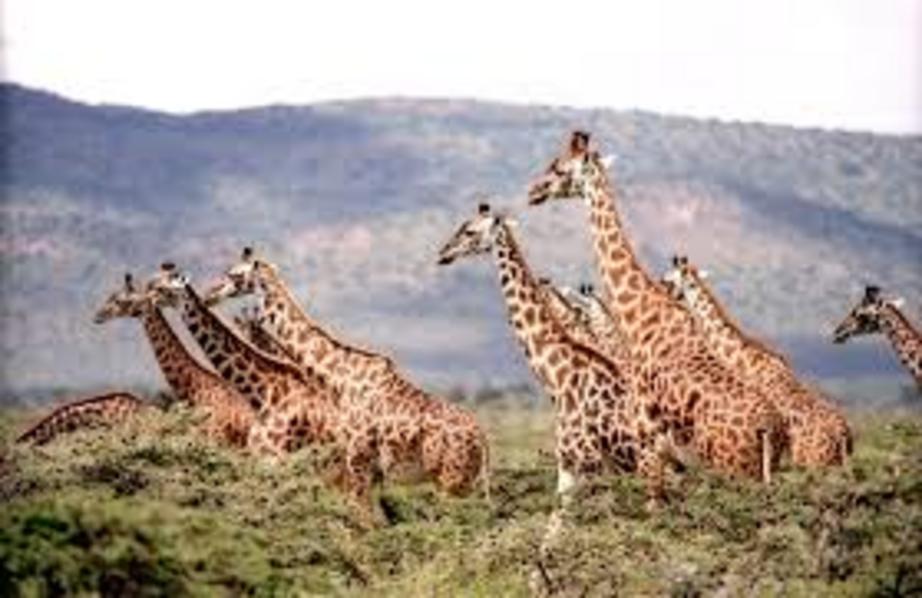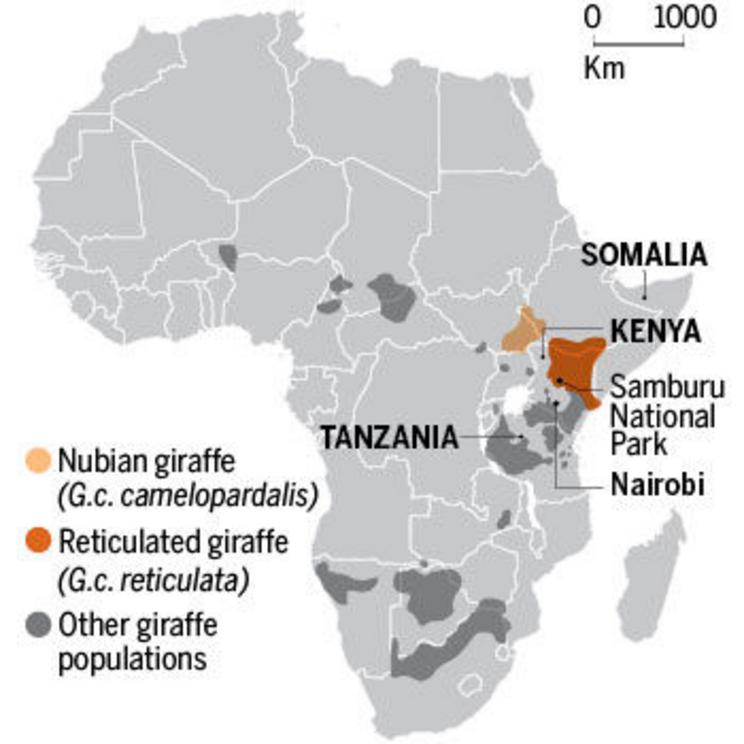Surge in wildlife killings is wiping out giraffes
For conservationists stationed in politically volatile regions, life can be harrowing.
Last October, John Doherty had to take refuge under his desk here for nearly 2 hours as armed herders, angry at grazing restrictions, attacked a nearby ranger headquarters. He could hear shouting and frenzied footsteps outside and bullets smacking into his office wall. "I was wondering whether I should call my family to tell them I love them," says the zoologist, of Queen's University Belfast in the United Kingdom.
In recent months, drought and overgrazing in northern Kenya have sent thousands of herders and their livestock into national parks and other protected areas, intensifying tensions over land and grazing. Violence has taken the lives of several rangers, and a surge in wildlife killings is devastating populations of one of East Africa's most majestic beasts: giraffes. "This affects all wildlife, but giraffes may be particularly hard hit," says Fred Bercovitch, a zoologist at Kyoto University in Japan and director of Save the Giraffes, a nonprofit in San Antonio, Texas.

For hunters, "giraffes are an easy target," he notes. And as scientists have recognized only recently, giraffes have multiple species, and several populations are already in serious decline. In the past 30 years, populations of two East African varieties, the Nubian and reticulated giraffes, have plunged by 97% and 78%, respectively, and the International Union for the Conservation of Nature may soon declare them critically endangered, says Doherty, who is involved in the assessment and leads the Reticulated Giraffe Project, a joint initiative with the Kenya Wildlife Service. In response to the threat, he and other scientists are stepping up research on the animals' birth and survival rates, movements, and interactions with resources and landscapes, hoping to pinpoint risks and focus conservation efforts
The biggest threats to the animals are rapid human population growth and the influx of herders, along with refugees fleeing regional conflicts. In the refugee camps bordering Kenya and Somalia, for instance, bush meat, including giraffes, is an important source of food for half a million destitute people.
A traditional predator, the lion, may also be taking a growing toll. A study led by Derek Lee, a zoologist at the Wild Nature Institute, a nonprofit in Concord, New Hampshire, found that giraffe calves in the Tarangire Ecosystem in northern Tanzania are more likely to be eaten by lions, resulting in a 37% drop in reproductive success, when wildebeest and zebra are not around. The finding suggests that because those migratory animals, the cats' preferred prey, are in sharp decline, the lions may be turning to other prey, including giraffes. "This just shows how important it is to study giraffes, or any species, as part of the bigger picture," says Anne Innis-Dagg, a zoologist at the University of Waterloo in Canada, who was not involved in the study, published last year in Ecology and Evolution.
Spotty giraffes
Two of Africa's multiple giraffe populations, the Nubian and reticulated, were already in serious decline when drought and turmoil struck East Africa.

(GRAPHIC) G.GRULLÓN/SCIENCE; (DATA) GIRAFFE CONSERVATION FOUNDATION
Adding to the pressure is exponential growth in mining and infrastructure development—highways, railways, oil pipelines, and industrial compounds—which often encroach on key giraffe habitats, including those in national parks. The newly opened $3.2 billion Mombasa-Nairobi railway, for instance, cuts through Kenya's Tsavo National Park. Such infrastructure projects "are going to have a massive impact on the ecosystems," Lee says.
Giraffes are especially vulnerable to population decline because of their life history. After sifting through 40 years of field data, Bercovitch and Philip Berry, a zoologist in Mfuwe, Zambia, came to a disturbing conclusion. An average female gives birth to five calves during her lifetime, and only half of those normally survive, they reported last year in the African Journal of Ecology. "This means that the species has zero population growth," Bercovitch says. Conservation efforts, he says, should aim to maximize calf survival and females' lifetime reproductive success by, for instance, protecting breeding and calving grounds.
To identify those areas as well as giraffes' preferred foraging grounds and migratory corridors, conservationists need to map the animals' behavior and movements. Giraffes' unique coat patterns make it possible to follow individuals, both in the field and by analyzing images and video with pattern-recognition software. But scientists would also like to track individual animals more closely, and capturing giraffes to attach a conventional tag or collar isn't easy. "It can be risky, too, because giraffes are uniquely fragile," Doherty says. "Their body shape makes them especially prone to neck and leg injuries." His team is developing a new technique to track a large number of giraffes without having to capture them. "It's trauma-free," says Doherty, who says confidentiality agreements with Kenyan authorities prevent him from disclosing the details.
For now, conservationists hope the turmoil in northern Kenya will not worsen—and with it the plight of the giraffes. "I wasn't unaware of the risk when I decided to station here 9 years ago," Doherty says. "But that October morning was one I hope will not repeat."
For the rest of this article please go to source link below.
